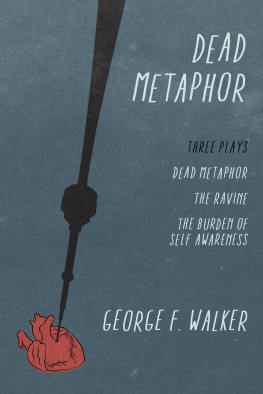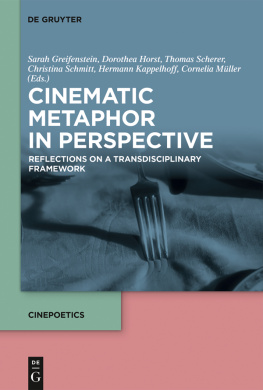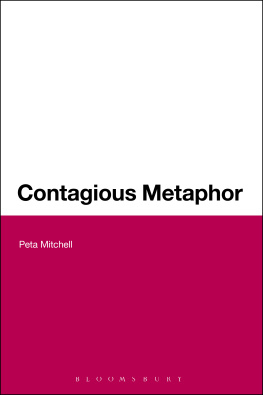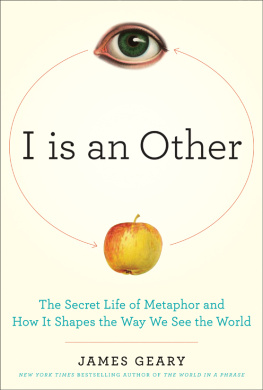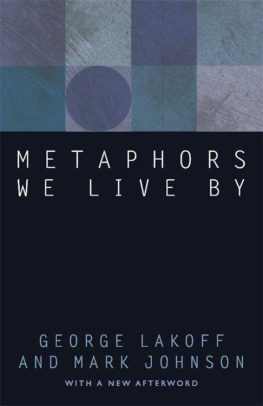
Contagion and the National Body
Drawing on the work of George Lakoff, this book provides a detailed analysis of the organism metaphor, which draws an analogy between the national or social body and a physical body. With attention to the manner in which this metaphor conceives of various sub-groups as either beneficial or detrimental to the (social) bodys overall functioning, the author examines the use of this metaphor to view marginalized sub-populations as invasive or contagious entities that need to be treated in the same way as harmful bacteria or pathogens. Analyzing the organism metaphor as it was employed in the service of social injustice through the nineteenth and twentieth centuries in the United States, Contagion and the National Body focuses on the alarm eras of the restrictive immigration period (18901924), the agitation against Chinese and Japanese populations on the West Coast, the eugenic periods targeting of feeble-minded persons and other defectives, periods of anti-Semitism, the anti-Communist movements, and various forms of racial animosity against African-Americans.
Gerald V. OBrien is Professor and Department Chair of Social Work at Southern Illinois University Edwardsville, USA, and author of Framing the Moron: The Social Construction of Feeble-Mindedness in the American Eugenic Era.
Contagion and the National Body
The Organism Metaphor in American Thought
Gerald V. OBrien
First published 2018
by Routledge
2 Park Square, Milton Park, Abingdon, Oxon OX14 4RN
and by Routledge
711 Third Avenue, New York, NY 10017
Routledge is an imprint of the Taylor & Francis Group, an informa business
2018 Gerald V. OBrien
The right of Gerald V. OBrien to be identified as author of this work has been asserted by him in accordance with sections 77 and 78 of the Copyright, Designs and Patents Act 1988.
All rights reserved. No part of this book may be reprinted or reproduced or utilised in any form or by any electronic, mechanical, or other means, now known or hereafter invented, including photocopying and recording, or in any information storage or retrieval system, without permission in writing from the publishers.
Trademark notice: Product or corporate names may be trademarks or registered trademarks, and are used only for identification and explanation without intent to infringe.
British Library Cataloguing-in-Publication Data
A catalogue record for this book is available from the British Library
Library of Congress Cataloging-in-Publication Data
A catalog record for this book has been requested
ISBN: 978-1-138-30622-6 (hbk)
ISBN: 978-1-315-14163-3 (ebk)
Typeset in Times New Roman
by Out of House Publishing
Dedicated with love to Kathryn and the late Daniel OBrien, and Donald and Jacqueline McGurk.
Contents
Much of the research and writing of this book was completed during a sabbatical in 2013. Im grateful to the SIUE College of Arts and Sciences Personnel Committee and the University administration for supporting this sabbatical. I especially want to thank the faculty of the Department of Social Work and particularly Dr. Kathleen Tunney for her assistance in covering my teaching and administrative duties during this semester. Thanks to all my faculty colleagues at the University, College and Department level who have supported my research over the years. Special thanks to the various graduate assistants who have assisted me, either in accessing sources or providing feedback on or editing chapters. This includes Samantha Gill, Carolyn Florczyk, Erin Steingruby, and Amanda Feldhaus. Kelly Lasiter, our administrative assistant, has done much within the department to make my job easier, and I greatly appreciate her support.
I would like to acknowledge the authors whose writings led me in the direction of this work. I have been inspired over the years by a broad range of scholars in areas such as historical studies, disability history, and social justice. These include the late Steven Jay Gould, Wolf Wolfensberger, Zygmunt Bauman, and Burton Blatt, as well as James Trent, Sam Keen, Robert Proctor, and Sander Gilman. Metaphor scholars were obviously very influential in the creation of this book, and I am grateful to George Lakoff, Mark Landau, Andreas Musolff, Jonathan Charteris-Black, and Paul Rozin for their research. There is a lot of groundbreaking work currently being published on the impact of metaphors on our social and political life, and I could easily extend this list. Thanks also to my fellow eugenic/disability scholars who accompanied me on a month-long seminar in Germany in 2004. They and this experience contributed greatly to my understanding of social justice and the mechanisms supporting dehumanization and oppression.
Some of the work in this book was previously published in revised version in several journals. Thanks to Taylor and Francis, the American Association on Intellectual and Developmental Disabilities, the Journal of Sociology and Social Welfare, and the Journal of Social Work Education for allowing me to use some of this material within the text.
Finally, I want to take this opportunity to state how grateful I am to my family. My wife Jean has always been extremely supportive of my work even though it often takes me away from other, more important, things, and I am deeply grateful to her. Thanks to my children, Kevin, Mark, and Shannon, as well as Jade and Quinn. Thanks also to my extended family, and especially my parents and in-laws to whom this book is dedicated. I have had incredible support over the years and am grateful to everyone who has expressed an interest in my work.
In his 1997 book Postmodernity and Its Discontents, the late sociologist Zygmunt Bauman expanded on Mary Douglass (1966) seminal writings on purity and our inherent need to control those things (or persons) that seem out of order or threatening to our personal space or boundaries. He wrote that [s]weeping the floor and stigmatizing traitors or banishing strangers appear to stem from the same motive of the preservation of order, or making or keeping the environment understandable and hospitable (Bauman 1997, p. 8). As others have done, he compares the strangers in our world to dirt, filth, and bacteria, noting that its
No wonder the locals of all times and places, in their frenzied efforts to separate, confine, exile or destroy the strangers compared the objects of their exertions to vermin and bacteria. No wonder, either, that they compared the meaning of their own action to hygienic routines; they fought the strangers, convinced that they defended health against the carriers of disease.
(Bauman 1997, p. 10)
This book is about the strangers in our lives, those social sub-groups who unknowingly foster anxiety and confusion, who need to be labeled, sequestered, tracked, and controlled, lest they become lost within the social body and invite contagion and corporeal damage. The organism metaphor (though its often referred to by other terms) has been the subject of a large array of writings over the years. While I draw on many of these previous works, here I primarily consider the impact of the organism metaphor on at-risk, deviant, or vulnerable populations. These groups, often referred to as marginalized because they live at (or beyond) the margins of civilized society, have frequently been subject to measures of social control, often in the guise of protective public policy measures. Arguments related to the organism metaphor (along with other pejorative metaphor themes) have often served as a principle mode of rationalizing such measures.



